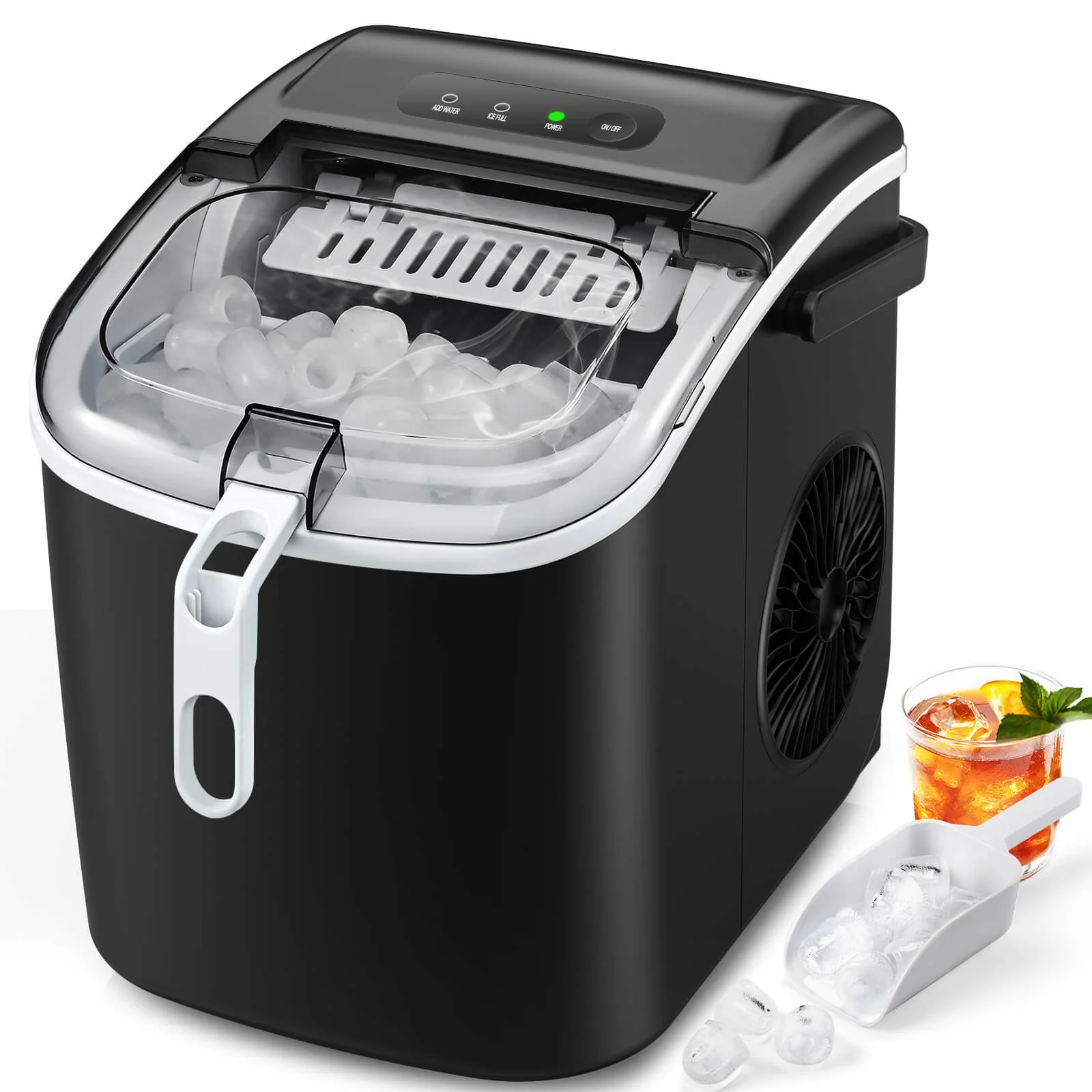Ice makers have become an integral part of modern kitchens and commercial spaces, offering convenience and efficiency in providing a steady supply of ice. These appliances, designed to convert water into ice cubes or crushed ice, come in various forms, including built-in units within refrigerators and standalone machines. This article delves into the different types of ice maker, their functionalities, benefits, and considerations when choosing the right one for your needs.
The Evolution of Ice Makers
Early Innovations
The concept of ice making dates back to ancient times when people stored ice and snow in insulated pits or cellars. The first commercial ice-making machine was invented in the mid-19th century by Dr. John Gorrie, an American physician, to help treat his patients with yellow fever. This invention laid the groundwork for modern refrigeration and ice-making technology.
Modern Developments
Today’s ice makers are the result of decades of innovation and advancement. They are designed to be more efficient, user-friendly, and versatile. With the advent of modern refrigeration systems, ice makers have become more compact and integrated into various appliances, providing a seamless experience for users.
Types of Ice Makers
Ice makers can be broadly categorized into two main types: built-in and standalone units. Each type has its own set of features and advantages, catering to different needs and preferences.
Built-in Ice Makers
Built-in ice makers are commonly found in refrigerators, offering the convenience of having ice readily available within a multi-functional appliance. These ice makers are usually located in the freezer compartment and are designed to produce ice cubes or crushed ice on demand.
Advantages
- Space-saving: Built-in ice makers save space by combining two functionalities into one appliance.
- Convenience: Users can access ice without needing a separate machine, making it ideal for daily use.
- Integrated Design: They blend seamlessly with the overall design of the refrigerator, maintaining aesthetic appeal.
Considerations
- Capacity: The ice production capacity of built-in ice makers is typically lower than standalone units.
- Maintenance: Regular maintenance is required to ensure the ice maker functions efficiently.
Standalone Ice Makers
Standalone ice makers are independent units dedicated solely to producing ice. These machines are available in various sizes and capacities, making them suitable for both residential and commercial use.
Advantages
- Higher Capacity: Standalone ice makers can produce a larger quantity of ice, making them ideal for parties, events, or commercial use.
- Versatility: They can be placed anywhere with a water supply and power outlet, offering flexibility in placement.
- Special Features: Many standalone units come with advanced features such as different ice cube sizes, quick-freeze functions, and self-cleaning options.
Considerations
- Space Requirement: They require additional space compared to built-in units.
- Initial Cost: Standalone ice makers can be more expensive upfront but often provide greater value over time.
How Ice Makers Work
Ice makers, regardless of type, operate on a similar basic principle: they convert water into ice and then store the ice until needed. Here’s a step-by-step overview of the ice-making process:
- Water Supply: Water is supplied to the ice maker from a water line or reservoir.
- Freezing: The water is directed into an ice mold or tray where it is rapidly cooled to form ice.
- Harvesting: Once the ice is formed, a heating element slightly warms the mold to loosen the ice cubes.
- Discharging: The ice cubes are then ejected from the mold and fall into a storage bin.
- Storage: The ice is stored in an insulated bin until it is dispensed or used.
Key Components
- Compressor: Provides the cooling necessary to freeze the water.
- Water Valve: Controls the flow of water into the ice maker.
- Thermostat: Monitors the temperature to ensure proper freezing.
- Ice Mold: Shapes the water into ice cubes or other forms.
- Ejector Blades: Push the ice out of the mold once it is formed.
- Storage Bin: Holds the ice until it is needed.
Benefits of Ice Makers
Convenience
Ice makers provide a continuous supply of ice without the need for manually filling ice trays. This convenience is particularly valuable in hot climates or during social gatherings where ice demand is high.
Efficiency
Modern ice makers are designed to be energy-efficient, consuming less power while producing a significant amount of ice. This efficiency translates into cost savings over time, especially for commercial establishments.
Hygiene
Using an ice maker ensures that the ice is produced in a controlled, sanitary environment. This is particularly important in food service settings where maintaining hygiene standards is crucial.
Versatility
Standalone ice makers offer various ice types, including traditional cubes, nugget ice, and crushed ice. This versatility caters to different preferences and uses, from chilling beverages to making smoothies and cocktails.
Choosing the Right Ice Maker
Selecting the right ice maker involves considering several factors to ensure it meets your specific needs. Here are key considerations to keep in mind:
Capacity
Determine how much ice you need on a daily basis. For households, a smaller built-in unit might suffice, while larger families or frequent entertainers might benefit from a high-capacity standalone machine.
Size and Space
Evaluate the available space in your kitchen or designated area. Built-in ice makers save space but may have limited capacity, whereas standalone units require more room but offer higher production rates.
Ice Type
Consider the type of ice you prefer. Some ice makers offer options for different ice shapes and sizes, catering to specific needs such as ice for drinks, food preservation, or medical use.
Installation
Assess the ease of installation and the availability of water and power connections. Built-in units require professional installation, while portable standalone units can be set up with minimal effort.
Features
Look for additional features that enhance usability, such as self-cleaning functions, timers, and programmable settings. These features can add convenience and improve the overall user experience.
Budget
Ice makers come in a wide range of prices. Set a budget that aligns with your needs and preferences, ensuring you get the best value for your investment.
Maintenance and Care
Proper maintenance is essential to keep your ice maker running efficiently and prolong its lifespan. Here are some maintenance tips:
Regular Cleaning
Clean the ice maker regularly to prevent the buildup of minerals, mold, and bacteria. Follow the manufacturer’s instructions for cleaning the different components, including the ice mold, water reservoir, and storage bin.
Filter Replacement
If your ice maker has a water filter, replace it according to the manufacturer’s recommendations. A clean filter ensures that the ice produced is pure and free from contaminants.
Defrosting
For ice makers with freezer compartments, periodic defrosting is necessary to prevent ice buildup that can affect performance. Follow the manufacturer’s guidelines for defrosting the unit.
Inspection
Regularly inspect the ice maker for any signs of wear or damage. Check the water supply line, valves, and other components to ensure they are functioning correctly.
Common Issues and Troubleshooting
Despite their reliability, ice makers can encounter issues that affect their performance. Here are some common problems and troubleshooting tips:
Ice Maker Not Producing Ice
- Check Water Supply: Ensure that the water supply line is connected and the water valve is open.
- Inspect Thermostat: Verify that the thermostat is set to the correct temperature.
- Examine Ejector Blades: Check if the ejector blades are stuck or damaged.
Ice Maker Producing Small or Hollow Ice Cubes
- Adjust Water Level: Make sure the water level is sufficient for proper ice formation.
- Clean Ice Mold: Remove any mineral buildup that might be affecting the freezing process.
- Check Freezer Temperature: Ensure the freezer temperature is set to the recommended level.
Ice Maker Leaking Water
- Inspect Water Line: Check for any leaks or blockages in the water supply line.
- Examine Ice Mold: Look for cracks or damage in the ice mold that might be causing leaks.
- Check Seals: Ensure that seals and gaskets are intact and properly positioned.
The Future of Ice Makers
The future of ice makers is promising, with ongoing advancements aimed at enhancing efficiency, sustainability, and user experience. Here are some trends and innovations to watch for:
Energy Efficiency
Manufacturers are focusing on developing ice makers that consume less energy without compromising performance. This shift is driven by the increasing demand for environmentally friendly appliances.
Smart Technology
Integration of smart technology allows users to control and monitor their ice makers remotely through smartphone apps. Features like scheduled ice production, alerts for maintenance, and usage tracking add convenience and customization.
Advanced Filtration
Improved water filtration systems ensure that the ice produced is of the highest quality, free from impurities and contaminants. This is particularly important for health-conscious consumers and businesses in the food service industry.
Customizable Ice
Future ice makers may offer even more options for customizable ice shapes and sizes, catering to a wider range of preferences and applications.
Conclusion
Ice makers have evolved into essential appliances that provide convenience, efficiency, and versatility in both residential and commercial settings. Whether integrated into refrigerators or as standalone units, they offer a continuous supply of ice, enhancing the quality of life and ensuring that ice is always available when needed. By understanding the different types of ice makers, their functionalities, and maintenance requirements, consumers can make informed decisions and enjoy the benefits of this indispensable appliance. As technology continues to advance, the future of ice maker promises even greater innovation and improved performance, making them an even more valuable addition to any home or business.
Keep an eye for more news & updates on Gossips!




